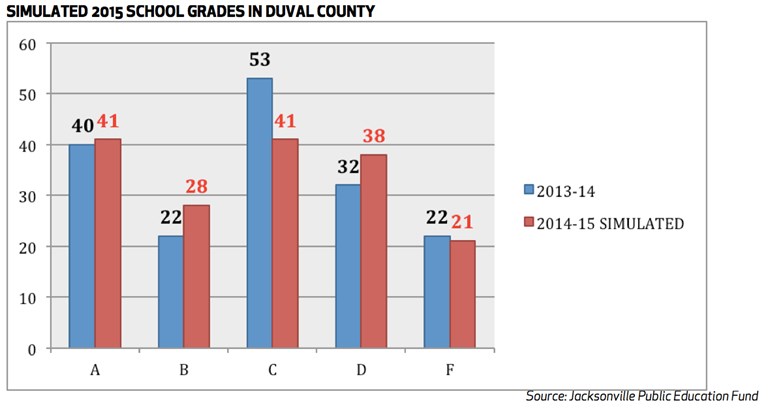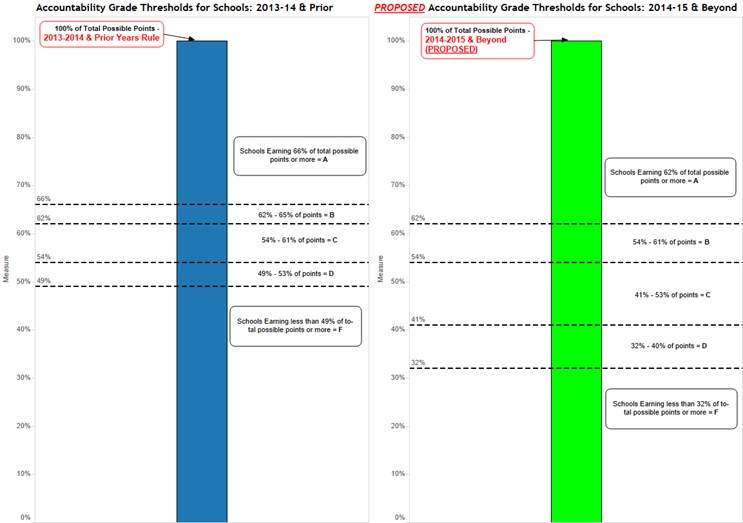Department of Education releases school grade "simulations" based on proposals
12/10/2015
Today the Florida Department of Education released simulated school grades, based on Commissioner Pam Stewart's recommended cut scores for the Florida Standards Assessment (FSA) and on the department's proposal for revising how school grades are calculated.
Neither of these proposals have been voted on, and won't be for at least another month. But the simulations give some idea of what school grades would look like if both of these version ultimately pass. It is certainly interesting information.
But if there is one important thing to take away from this information release, it is that what we can learn from it is very limited.
As a reminder, school grades are typically based both on proficiency and growth. It's important to understand that proficiency can tell us how well students are performing, but growth (also known as learning gains) is the measure that tells us how well schools are performing. The simulated 2014-15 grades do not include learning gains at all. Our understanding from reading the draft school grades rule is that learning gains will go back into the calculation beginning in the 2015-16 grades, which should be out sometime in June or July 2016.
Notable in this simulation are that the grade distribution is similar to what was seen in 2013-14 grades. See below for the change in the total number of schools receiving each letter grade between 2014 grades and simulated 2015 grades.

School grades are based on a number of points, and under the proposed rule the percentage of points needed for each letter grade would change. The simulated grades show a similar distribution of grades in part because the cut scores for passing rates in English and math would be more difficult, while the threshold of points that each school needs to receive is lower. You can read more about that here.
See below for a look at how the threshold changes.

So here's the big takeaway. The information released today doesn't tell us what we need to know about how schools are performing — it is just one piece of a bigger picture.
Think about gauging student and school performance like looking at the dashboard of your car. There are a lot of gauges, and they all tell us something different about what's going on inside and outside the car. But no single measure can tell us everything we need to know about what's happening in the car. That's how we should think about any piece of student achievement data — it's one part of the whole.
And for today's simulated grade release, it's important to remember that we're not even looking at a gauge on the dashboard of the actual car - more like a gauge on the dashboard of a car simulator game. These simulated grades do not tell us anything definitive about how our students or schools actually performed last year, only how they could potentially be rated under one particular set of proposed changes to the state's accountability system.
So what's next? The State Board of Education is expected to vote on the cut scores in January, and on the school grading formula after that. We would expect the 2014-15 grades to be released around that time and will share more updates as we hear them.
You can read the full release of information from the Florida Department of Education here, including the full text of the draft school grades rule and grade simulations for each school.
What are your questions about this process? Let us know in the comments.